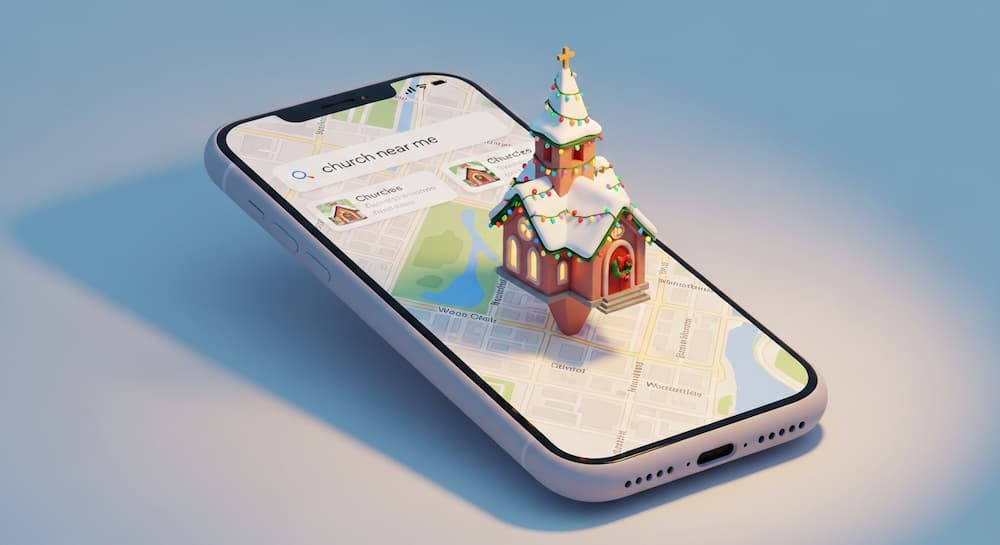Bridging the Generational Gap: The Unifying Power of SMS
For small businesses and churches alike, SMS is proving to be a potent channel that facilitates prompt and personal communication with unparalleled reach.
.jpeg)
In today's hyper-connected age, a communication chasm remains, often overlooked - the generational gap. This multifaceted challenge, with its roots in societal, cultural, and technological evolutions, may find a resolution through an unexpected champion from the tech world - the Short Message Service (SMS), also known as texting. Drawing from my background as a pastor and now CEO of a church tech firm, I've witnessed a surge in engagement within communities that embrace texting or SMS.
Let's unravel how this basic yet effective tool is helping bridge the generation divides.
Demystifying the Generational Gap: Divergent Communication Modes
Prior to discussing the answer, it's vital to comprehend the question. Today's diverse societal blend comprises generations with unique communication styles and inclinations.
Baby Boomers (born between 1946 and 1964) matured in an era that cherished in-person conversations and phone calls. Generation X (born between 1965 and 1980) experienced the inception of the digital age, adopting email and rudimentary cell phones. Millennials (born between 1981 and 1996) were exposed to the emergence of social media and real-time messaging platforms, while Generation Z (born between 1997 and 2012) has grown up deeply embedded in a universe of smartphones and social media apps.
This kaleidoscope of communication mediums has resulted in a unique predicament. Each generation nestles in its comfort zone, causing communication fissures and often a lack of empathy towards varying generational viewpoints.
SMS: The Unifying Thread
Amidst these divergent communication trends, one device continues to comfortably straddle all generations - the SMS, or text message. Whether you're a Baby Boomer, Gen X, Millennial, or Gen Z, you're likely to have engaged with an SMS in some capacity. Here's why SMS acts as the ideal conduit to bridge the generational communication divide.
Universality and Accessibility: SMS, with its simplicity and ease of use, doesn't necessitate advanced gadgets or a stable internet connection, hence making it viable for anyone possessing a basic mobile phone. It's the denominator that holds together the vast equation of communication technology.
User-Friendliness: There's no steep learning curve involved with SMS. The process is as effortless as typing a message and hitting send. This ease is particularly appealing to older generations that may find advanced communication apps daunting.
Effectiveness: An impressive open rate of 98% characterizes SMS, implying that virtually every SMS sent is read by its recipient. This effectiveness is indispensable in communicating across generations.
Strategies to Bridge Generational Gaps with SMS: A Four-Step Guide
Having underscored the effectiveness of SMS as a uniting tool, let's delve into four practical steps to leverage this technology to bridge the generational gap.
Setting Up a Common Platform: Organizations, families, or communities can create an SMS-centric system for disseminating information or updates, ensuring everyone remains informed, irrespective of their communication platform of choice.
Personalized Interaction: Leverage SMS for personal, one-to-one conversations. A simple text enquiring about a person's well-being or conveying wishes on special occasions can bolster intergenerational bonds.
Educational Initiatives: Encourage the younger generation to assist older members in getting comfortable with SMS if they're not already accustomed to it. This presents an opportunity for interaction and mutual understanding among different generations.
Promoting Dialogue: SMS can be an effective tool for initiating and promoting dialogue between generations. Seek opinions, share thoughts or ideas, and utilize it as a platform for discussion.
In summation, although SMS may seem antiquated in the face of swift technological progression, it remains a potent tool in bridging the generational communication gap. Its simplicity, universality, and efficiency render it a universally accepted medium. By integrating SMS into your church's communication strategy, we can cultivate a more interconnected, empathetic, and understanding society, where each generation feels acknowledged, valued, and included.
For more insights on incorporating SMS (text messaging) into your church's communication strategy, explore Tithely Messaging.
Sign Up for Product Updates
In today's hyper-connected age, a communication chasm remains, often overlooked - the generational gap. This multifaceted challenge, with its roots in societal, cultural, and technological evolutions, may find a resolution through an unexpected champion from the tech world - the Short Message Service (SMS), also known as texting. Drawing from my background as a pastor and now CEO of a church tech firm, I've witnessed a surge in engagement within communities that embrace texting or SMS.
Let's unravel how this basic yet effective tool is helping bridge the generation divides.
Demystifying the Generational Gap: Divergent Communication Modes
Prior to discussing the answer, it's vital to comprehend the question. Today's diverse societal blend comprises generations with unique communication styles and inclinations.
Baby Boomers (born between 1946 and 1964) matured in an era that cherished in-person conversations and phone calls. Generation X (born between 1965 and 1980) experienced the inception of the digital age, adopting email and rudimentary cell phones. Millennials (born between 1981 and 1996) were exposed to the emergence of social media and real-time messaging platforms, while Generation Z (born between 1997 and 2012) has grown up deeply embedded in a universe of smartphones and social media apps.
This kaleidoscope of communication mediums has resulted in a unique predicament. Each generation nestles in its comfort zone, causing communication fissures and often a lack of empathy towards varying generational viewpoints.
SMS: The Unifying Thread
Amidst these divergent communication trends, one device continues to comfortably straddle all generations - the SMS, or text message. Whether you're a Baby Boomer, Gen X, Millennial, or Gen Z, you're likely to have engaged with an SMS in some capacity. Here's why SMS acts as the ideal conduit to bridge the generational communication divide.
Universality and Accessibility: SMS, with its simplicity and ease of use, doesn't necessitate advanced gadgets or a stable internet connection, hence making it viable for anyone possessing a basic mobile phone. It's the denominator that holds together the vast equation of communication technology.
User-Friendliness: There's no steep learning curve involved with SMS. The process is as effortless as typing a message and hitting send. This ease is particularly appealing to older generations that may find advanced communication apps daunting.
Effectiveness: An impressive open rate of 98% characterizes SMS, implying that virtually every SMS sent is read by its recipient. This effectiveness is indispensable in communicating across generations.
Strategies to Bridge Generational Gaps with SMS: A Four-Step Guide
Having underscored the effectiveness of SMS as a uniting tool, let's delve into four practical steps to leverage this technology to bridge the generational gap.
Setting Up a Common Platform: Organizations, families, or communities can create an SMS-centric system for disseminating information or updates, ensuring everyone remains informed, irrespective of their communication platform of choice.
Personalized Interaction: Leverage SMS for personal, one-to-one conversations. A simple text enquiring about a person's well-being or conveying wishes on special occasions can bolster intergenerational bonds.
Educational Initiatives: Encourage the younger generation to assist older members in getting comfortable with SMS if they're not already accustomed to it. This presents an opportunity for interaction and mutual understanding among different generations.
Promoting Dialogue: SMS can be an effective tool for initiating and promoting dialogue between generations. Seek opinions, share thoughts or ideas, and utilize it as a platform for discussion.
In summation, although SMS may seem antiquated in the face of swift technological progression, it remains a potent tool in bridging the generational communication gap. Its simplicity, universality, and efficiency render it a universally accepted medium. By integrating SMS into your church's communication strategy, we can cultivate a more interconnected, empathetic, and understanding society, where each generation feels acknowledged, valued, and included.
For more insights on incorporating SMS (text messaging) into your church's communication strategy, explore Tithely Messaging.
podcast transcript
In today's hyper-connected age, a communication chasm remains, often overlooked - the generational gap. This multifaceted challenge, with its roots in societal, cultural, and technological evolutions, may find a resolution through an unexpected champion from the tech world - the Short Message Service (SMS), also known as texting. Drawing from my background as a pastor and now CEO of a church tech firm, I've witnessed a surge in engagement within communities that embrace texting or SMS.
Let's unravel how this basic yet effective tool is helping bridge the generation divides.
Demystifying the Generational Gap: Divergent Communication Modes
Prior to discussing the answer, it's vital to comprehend the question. Today's diverse societal blend comprises generations with unique communication styles and inclinations.
Baby Boomers (born between 1946 and 1964) matured in an era that cherished in-person conversations and phone calls. Generation X (born between 1965 and 1980) experienced the inception of the digital age, adopting email and rudimentary cell phones. Millennials (born between 1981 and 1996) were exposed to the emergence of social media and real-time messaging platforms, while Generation Z (born between 1997 and 2012) has grown up deeply embedded in a universe of smartphones and social media apps.
This kaleidoscope of communication mediums has resulted in a unique predicament. Each generation nestles in its comfort zone, causing communication fissures and often a lack of empathy towards varying generational viewpoints.
SMS: The Unifying Thread
Amidst these divergent communication trends, one device continues to comfortably straddle all generations - the SMS, or text message. Whether you're a Baby Boomer, Gen X, Millennial, or Gen Z, you're likely to have engaged with an SMS in some capacity. Here's why SMS acts as the ideal conduit to bridge the generational communication divide.
Universality and Accessibility: SMS, with its simplicity and ease of use, doesn't necessitate advanced gadgets or a stable internet connection, hence making it viable for anyone possessing a basic mobile phone. It's the denominator that holds together the vast equation of communication technology.
User-Friendliness: There's no steep learning curve involved with SMS. The process is as effortless as typing a message and hitting send. This ease is particularly appealing to older generations that may find advanced communication apps daunting.
Effectiveness: An impressive open rate of 98% characterizes SMS, implying that virtually every SMS sent is read by its recipient. This effectiveness is indispensable in communicating across generations.
Strategies to Bridge Generational Gaps with SMS: A Four-Step Guide
Having underscored the effectiveness of SMS as a uniting tool, let's delve into four practical steps to leverage this technology to bridge the generational gap.
Setting Up a Common Platform: Organizations, families, or communities can create an SMS-centric system for disseminating information or updates, ensuring everyone remains informed, irrespective of their communication platform of choice.
Personalized Interaction: Leverage SMS for personal, one-to-one conversations. A simple text enquiring about a person's well-being or conveying wishes on special occasions can bolster intergenerational bonds.
Educational Initiatives: Encourage the younger generation to assist older members in getting comfortable with SMS if they're not already accustomed to it. This presents an opportunity for interaction and mutual understanding among different generations.
Promoting Dialogue: SMS can be an effective tool for initiating and promoting dialogue between generations. Seek opinions, share thoughts or ideas, and utilize it as a platform for discussion.
In summation, although SMS may seem antiquated in the face of swift technological progression, it remains a potent tool in bridging the generational communication gap. Its simplicity, universality, and efficiency render it a universally accepted medium. By integrating SMS into your church's communication strategy, we can cultivate a more interconnected, empathetic, and understanding society, where each generation feels acknowledged, valued, and included.
For more insights on incorporating SMS (text messaging) into your church's communication strategy, explore Tithely Messaging.
VIDEO transcript
In today's hyper-connected age, a communication chasm remains, often overlooked - the generational gap. This multifaceted challenge, with its roots in societal, cultural, and technological evolutions, may find a resolution through an unexpected champion from the tech world - the Short Message Service (SMS), also known as texting. Drawing from my background as a pastor and now CEO of a church tech firm, I've witnessed a surge in engagement within communities that embrace texting or SMS.
Let's unravel how this basic yet effective tool is helping bridge the generation divides.
Demystifying the Generational Gap: Divergent Communication Modes
Prior to discussing the answer, it's vital to comprehend the question. Today's diverse societal blend comprises generations with unique communication styles and inclinations.
Baby Boomers (born between 1946 and 1964) matured in an era that cherished in-person conversations and phone calls. Generation X (born between 1965 and 1980) experienced the inception of the digital age, adopting email and rudimentary cell phones. Millennials (born between 1981 and 1996) were exposed to the emergence of social media and real-time messaging platforms, while Generation Z (born between 1997 and 2012) has grown up deeply embedded in a universe of smartphones and social media apps.
This kaleidoscope of communication mediums has resulted in a unique predicament. Each generation nestles in its comfort zone, causing communication fissures and often a lack of empathy towards varying generational viewpoints.
SMS: The Unifying Thread
Amidst these divergent communication trends, one device continues to comfortably straddle all generations - the SMS, or text message. Whether you're a Baby Boomer, Gen X, Millennial, or Gen Z, you're likely to have engaged with an SMS in some capacity. Here's why SMS acts as the ideal conduit to bridge the generational communication divide.
Universality and Accessibility: SMS, with its simplicity and ease of use, doesn't necessitate advanced gadgets or a stable internet connection, hence making it viable for anyone possessing a basic mobile phone. It's the denominator that holds together the vast equation of communication technology.
User-Friendliness: There's no steep learning curve involved with SMS. The process is as effortless as typing a message and hitting send. This ease is particularly appealing to older generations that may find advanced communication apps daunting.
Effectiveness: An impressive open rate of 98% characterizes SMS, implying that virtually every SMS sent is read by its recipient. This effectiveness is indispensable in communicating across generations.
Strategies to Bridge Generational Gaps with SMS: A Four-Step Guide
Having underscored the effectiveness of SMS as a uniting tool, let's delve into four practical steps to leverage this technology to bridge the generational gap.
Setting Up a Common Platform: Organizations, families, or communities can create an SMS-centric system for disseminating information or updates, ensuring everyone remains informed, irrespective of their communication platform of choice.
Personalized Interaction: Leverage SMS for personal, one-to-one conversations. A simple text enquiring about a person's well-being or conveying wishes on special occasions can bolster intergenerational bonds.
Educational Initiatives: Encourage the younger generation to assist older members in getting comfortable with SMS if they're not already accustomed to it. This presents an opportunity for interaction and mutual understanding among different generations.
Promoting Dialogue: SMS can be an effective tool for initiating and promoting dialogue between generations. Seek opinions, share thoughts or ideas, and utilize it as a platform for discussion.
In summation, although SMS may seem antiquated in the face of swift technological progression, it remains a potent tool in bridging the generational communication gap. Its simplicity, universality, and efficiency render it a universally accepted medium. By integrating SMS into your church's communication strategy, we can cultivate a more interconnected, empathetic, and understanding society, where each generation feels acknowledged, valued, and included.
For more insights on incorporating SMS (text messaging) into your church's communication strategy, explore Tithely Messaging.



















.jpg)

.jpg)





